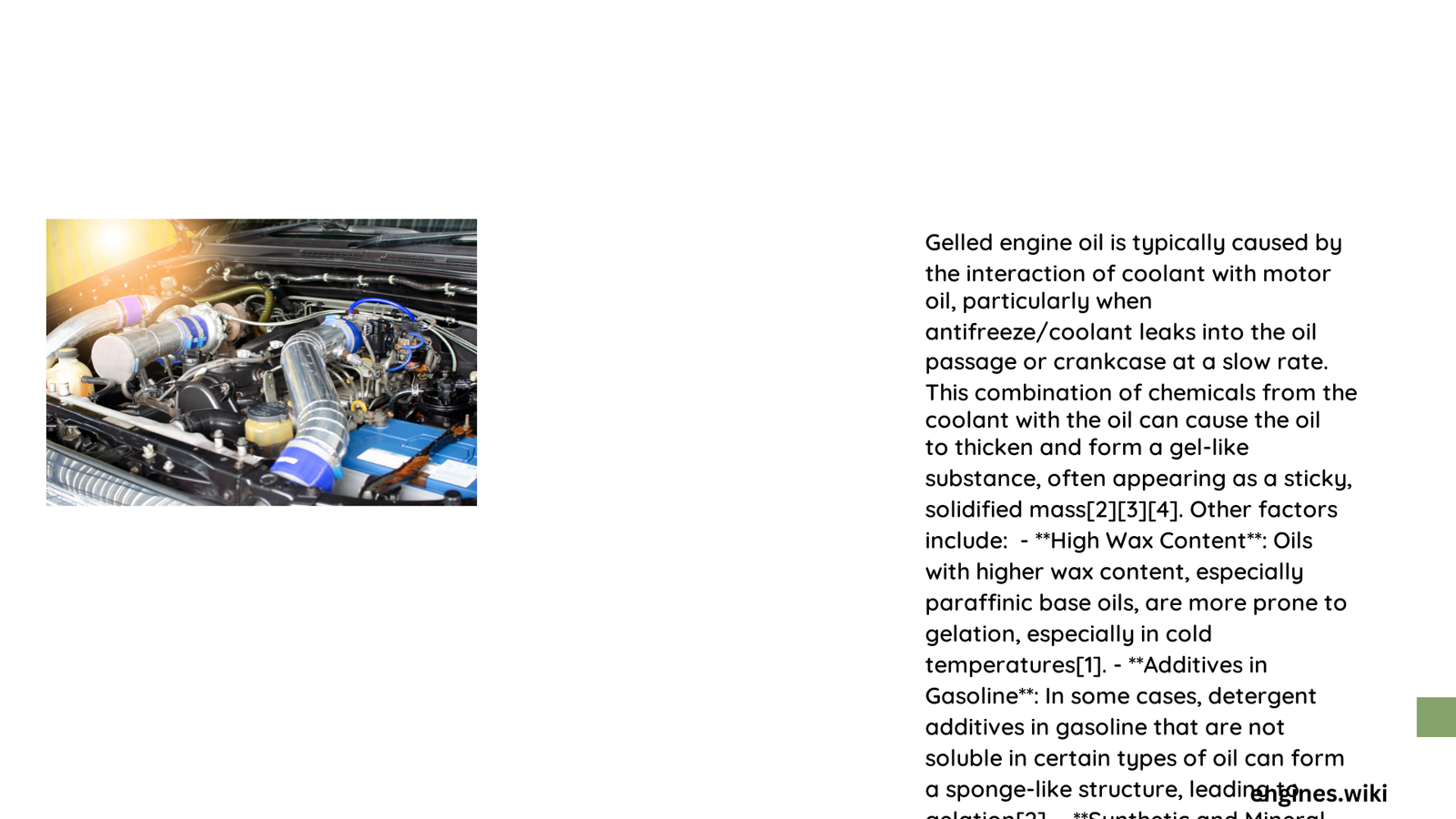Gelled engine oil represents a critical automotive challenge where lubricating oil transforms into a semi-solid state at low temperatures, potentially causing severe engine damage. This phenomenon occurs when oil’s molecular structures become rigid and lose their fluid characteristics, compromising engine lubrication, increasing wear, and risking catastrophic mechanical failure across various vehicle types and operating conditions.
What Causes Engine Oil to Gel?
Engine oil gelation is a complex process influenced by multiple factors:
Temperature Dynamics of Oil Gelation
| Oil Type | Gelation Temperature Range | Viscosity Threshold |
|---|---|---|
| Conventional Oil | -20°C to -30°C | 40,000 centipoise |
| Synthetic Oil | Down to -40°C | 30,000 mPa·s |
Key Factors Contributing to Oil Gelation
- Wax Content
- Higher paraffin concentrations increase gelation risk
- Conventional mineral oils more susceptible
-
Synthetic oils have lower wax content
-
Contaminant Presence
- Water infiltration
- Particulate matter
- Fuel dilution
How Does Gelled Engine Oil Impact Vehicle Performance?

Mechanical Consequences of Oil Gelation
Gelled engine oil creates multiple performance challenges:
- Reduced Lubrication Efficiency
- Increased friction between moving parts
- Accelerated component wear
-
Potential bearing and cylinder damage
-
Pump Performance Degradation
- Inability to circulate oil effectively
- Air binding in oil systems
- Potential engine seizure
What Strategies Prevent Engine Oil Gelation?
Proactive Maintenance Techniques
Oil Selection Strategies
- Choose synthetic oils with lower gelation temperatures
- Use cold flow improver additives
- Select oils meeting low-temperature performance standards
Preventive Maintenance
- Regular oil analysis
- Proper vehicle storage
- Temperature-appropriate oil selection
How Can Gelled Engine Oil Be Recovered?
Recovery Methods
- Gradual Heating
- Start engine slowly
- Allow controlled temperature increase
-
Monitor oil circulation
-
Chemical Additives
- Use cold flow improvers
- Modify oil molecular structure
- Restore fluid characteristics
Expert Recommendations
Best Practices for Oil Management
- Quarterly Oil Inspections
- Use High-Quality Synthetic Oils
- Monitor Vehicle Operating Conditions
Technical Insights
Oil Viscosity Measurement Standards
- ASTM D5133 defines gelation index
- Maximum acceptable viscosity: 40,000 centipoise
- Critical for understanding oil performance
Conclusion
Understanding gelled engine oil requires comprehensive knowledge of thermal dynamics, lubricant chemistry, and mechanical engineering principles. Proactive management and informed oil selection can significantly mitigate potential engine damage.
